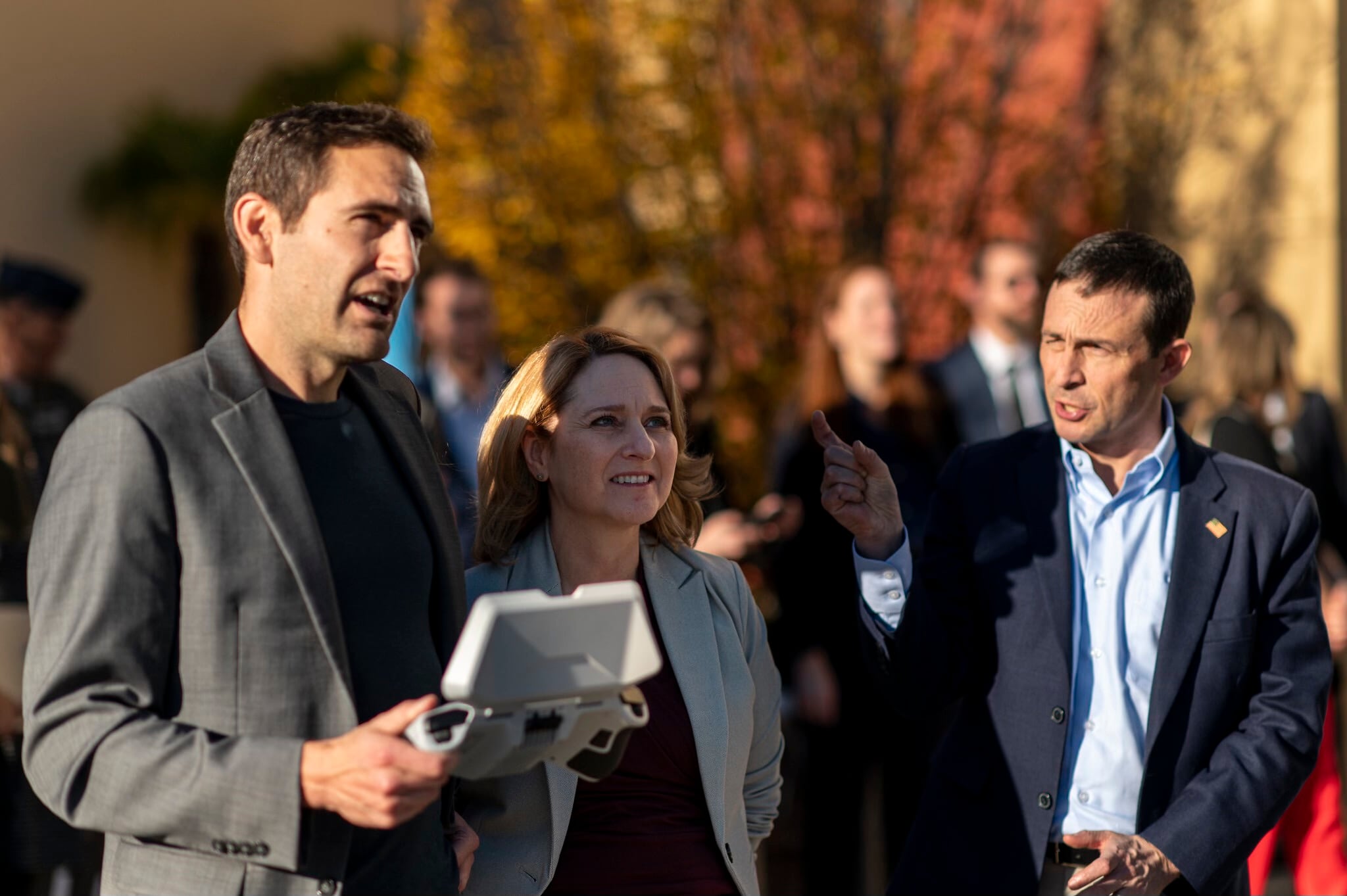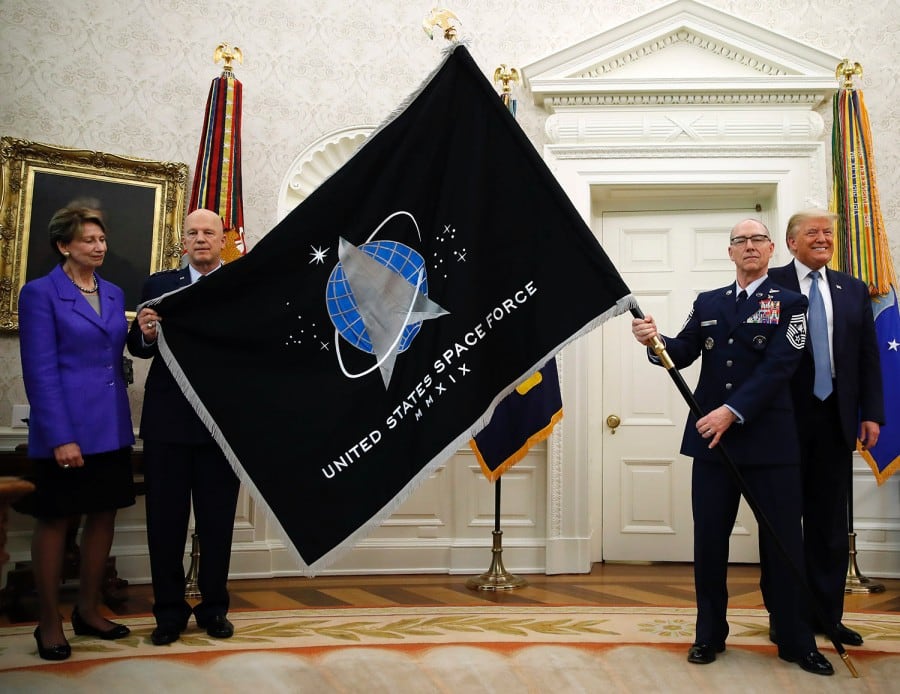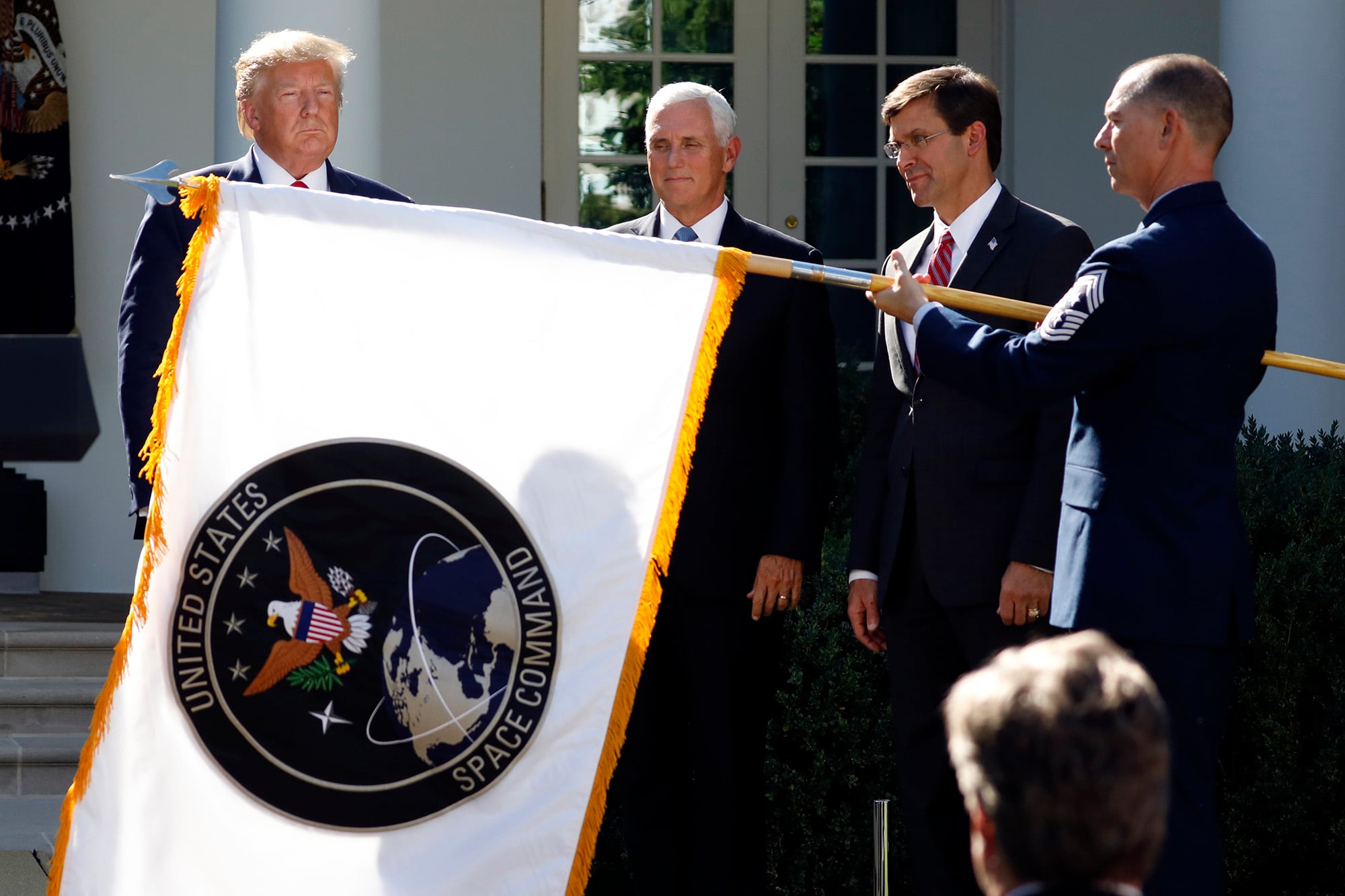The Navy is has really gone all in on unmanned systems taking a domain-agnostic approach on unmanned systems and is even creating an undersecretary position for unmanned systems and an unmanned warfare systems directorate (N99) within the Navy Headquarters staff. The chief of naval research expressed similar sentiments recently to the effect that naval forces could develop simultaneous cross-domain swarms.
"I want an [unmanned undersea vehicle], [unmanned surface vehicle] and [an unmanned aerial vehicle] swarming together," said Rear Admiral Mat Winter, Chief of Naval Research, said at the Center for Strategic and International Studies on July 22. "We want to understand is that technically feasible? The answer to that is yes."
To get there, Winter described a series of demonstrations — both upcoming and in the recent past — that have tested swarming technologies. Swarming technology — the act of overwhelming a target with a mass of vehicles, in any domain — has been a concept conceived aims to help solve the anti-access area denial environments developed by adversaries.
One such demonstrator program the Navy is testing is the Low Cost Unmanned Swarming Technology, or LOCUST. "My LOCUST program is truly maturing ... the algorithms to be able to maneuver individual vehicles in a complete concert, single organism type of domain and be able to break off and send and go do something, engage, sense, what have you, come back," Winter told reporters following his remarks. "While meanwhile the communications, not only between, but then out because this is a capability, it's a sensor, it's a battlespace capability that we want to be able to utilize for overwhelming adversaries RF spectrum but also be able to provide communication and information back to our commanders."
These algorithms that are developed, can be applied across all the Navy’s operational domains of warfare, he said. "The UAV, which is just a USB stick, that’s not the science. The science is the intelligent algorithms and the ability to communicate, sense and avoid, regroup and separate. And that is domain-agnostic," he added. "It’s for an application, but we have to continue to look how we can go across all domains."
"We need to get out of this paradigm of domain. that only aviators can talk about unmanned aviation systems. And that only submariners can talk about things that dwell underneath the water," Frank Kelley, deputy assistant secretary of the Navy for unmanned systems, said at the Sea-Air-Space conference on May 17. The Navy’s director of unmanned warfare systems, OPNAV N-99, Rear Adm. Robert Girrier, said the service is looking to a systems of systems approach that doesn’t just focus on one domain but rather a "general connectedness" approach. This connectedness, "accessing one domain and using it to help unlock another," can help the service start thinking in the larger framework of unlocking contested areas, he said at Sea-Air-Space.
Winter noted surface demonstrations that are testing these concepts in September. In fact, the Navy conducted a demonstration in 2014 on the James River that saw several surface vessels swarm a potentially threatening maritime asset. Winter said future concepts following these demonstrations will include multiple swarming boats to establish a perimeter, some breaking off to engage an adversary, then coming back to the formation — all with a human in the loop.
The Anti-Submarine Warfare Continuous Trail Unmanned Vessel, or ACTUV, recently redubbed Sea Hunter, was christened this spring. Winter told reporters following his remarks that ACTUV is still shared between the Defense Advanced Research Projects Agency and ONR, though DARPA will be looking to transfer it to the service soon.
One of the next steps is to apply these algorithms, technologies and concepts to the undersea domain with UUVs, which is more difficulta bit harder than on the surface or in the air. "We understand the topography well enough but we’re demonstrating, [and it’s] still [in] experimentation," Winter said.
A spokesperson for the Office of Naval Research said current efforts are only focused on UAV and USV swarming, though, with the maturity of domain-agnostic swarm software "it will be easier to integrate into UUVs." They also clarified that ONR is only tasked with developing capabilities adding deployment, and integration of capabilities will be determined by higher levels. "But swarm behavior offers the same advantages to undersea vehicles as it does to swarms in other domains. There are many possible uses for swarms, but in general, by synchronizing the behavior of autonomous unmanned vehicles, we facilitate complex missions and disaggregate risk," they said in an email to C4ISRNET.
Winter said the Navy's Large Diameter Unmanned Undersea Vehicle, or LDUUV, will conduct a demonstration early next year traveling underwater from San Diego to San Francisco testing open ocean navigation and sense-and-avoid technology.
"When will we bring the LDUUV, USV and the UAVs together, that’s not on a chart," Winter said, but he said did say the community needs to "make sure we continue to mature those domains and get that out to prototyping."
Part of the challenges in this space isare not merely scientific, but what Winter called the business of science. Coalescing various communities to work together and put differences aside. We have to keep our industry partners in the loop, Winter said, "because there’s cost share opportunities … to keep moving this forward … I sit back and I go, ‘Well, wait a minute. I’ve got Leidos working unmanned surface vehicles, I’ve got this company working’ — let’s get this together because I want to be domain-agnostic in the next demonstration."
He also noted how he envisions an Eisenhower highway system undersea for these large vessels — something he has referenced in the past. "One of our projects is, is to build the Eisenhower highway network on the sea beds in the seven oceans, because once you start that large scale deployments of UUVs, we want them to go out for decades at a time and have man on the loop but out there doing their own thing," he said. "So why can’t they come in and gas up or charge up, communicate, hang out for maybe a year or so and then come back?"
Similarly, something that Girrier has referenced in the past, and a concept laid out on a slide of unmanned warfare system’s near-term considerations during a presentation of Mike Novak, deputy director, for N99 at May AFCEA-hosted event, is the notion of increasing unmanned systems’ endurance from form days to weeks to weeks to months.
"Thousands of miles of logistical networks to allow large scale deployment of UUVs, [undersea unmanned vehicles] allowing them to communicate, engage, resupply," Winter said last summer at CSIS, regarding this type of a vision. An ONR spokesperson elaborated further, telling C4ISRNET via email that the force has to consider undersea refueling and communications stations as UUVs are integrated into long-duration operations. "So rather than thinking of an interstate highway system, think of the system of gas stations, restaurants, and telephones that grew alongside the highway to support traffic," the spokesperson said.
Secretary of Defense Ash Carter told sailors in February the department plans to invest $600 million in unmanned undersea technology over the next five years.
"The biggest thing that we like to emphasize is that unmanned systems are going to fundamentally change the way the Department of the Navy operates in the future," Kelley said at Sea-Air-Space in May.
Mark Pomerleau is a reporter for C4ISRNET, covering information warfare and cyberspace.







